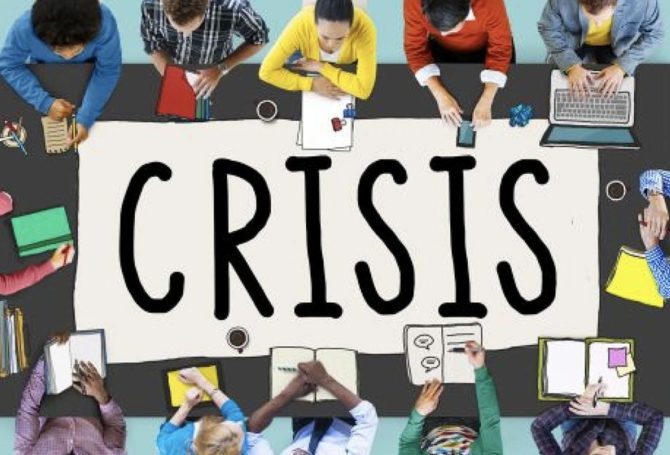Crisis Incidents Demand Communications and Actions with a Purpose
More than anything else, crisis incidents are time-sensitive events that make controlling communications nearly impossible and put reputations precariously at risk. No matter how well prepared an organization is, effective crisis response is necessary to create confidence and preserve reputation.
Mounting an effective crisis response is not easy or obvious. In this blog, we share the advice and experience from two sources – one research-based, the other experience-based. The advice from both overlaps and reinforces core crisis response principles.
Public health officers who have researched major crisis incidents for decades and advised how to respond to incidents such as the 2001 anthrax attacks have developed valuable principles that can be applied to any crisis event, regardless of its magnitude or potential impact.

Credible sources are critical. “Credibility is a function of trustworthiness and expertise,” says Matthew Seeger, a communications professor at Wayne State University who has been part of the public health agency research into crisis response. “Trustworthiness concerns the intentions, truthfulness and perceived morality of a source. Expertise reflects the source’s credentials, quality of information and lack of bias. Credibility is necessary for an audience to believe a message and during a crisis, credibility is a critical factor in persuading people to take protective actions.”
The absence of credible, trusted sources opens the door to bad information. Seeger pointed as an example to unverified rumors circulating during the 2017 Zika virus threat that required credible rebuttals. He should have elaborated on current COVID-19 vaccine hesitancy, fed in large part by politically motivated disinformation that has made some people resistant to credible information or messengers.
Seeger says the best way to combat rumors or misinformation is through timely, honest communications. “Frequent, honest communication can reduce rumors, needless anxiety and fear, and help quell dangerous rumors. This includes communicating both what is known and unknown about the risk,” Seeger says. “Irrational anxiety during a crisis is sometimes framed as panic – and used as an excuse for withholding information, offering overly optimistic scenarios or critiquing or silencing those voices expressing concern. The chances of irrational responses to crisis actually are greater in the absence of timely and accurate information.”
Effective communications must coincide with meaningful action to address a crisis. That applies to those responsible for causing a crisis incident as well as to those who may be its victims. Effective communication during a crisis involves persuading people to take harm-reducing actions,” Seeger says. “Credible information is necessary to promote the kinds of behaviors that can protect people. Effective communication can serve as a kind of social vaccination, [such as] encouraging good infectious disease hygiene that reduces harm.”
Consistency in messaging prevents confusion and undermining credibility. “Messages that offer very different assessments of risk and variable advice about what actions to take increase uncertainty and limit the likelihood the public will take appropriate actions,” Seeger says. “Consistency can be enhanced by having clear and frequent communication from credible sources. Although it is simply impossible to control communication and the flow of information during a crisis, it is possible to influence what is communicated by being credible, honest and frequent.” He advises establishing a clearinghouse to review communications before they are issued to ensure they are accurate and consistent.
Seeger adds a word about the role and pitfalls of social media in crisis communications. He says crisis management cannot be effective without capable and responsible social media engagement. “This responsibility is even more urgent in an era of 24/7 news coverage, multiple social media platforms and bots and AIs influencing our news feeds.”
Instinctif Partners, which specializes in reputation management for international business clients, offers experienced guidance for COVID-19 communications that is consistent with Seeger’s research-based recommendations.
Communicate with purpose. “The key is to be clear about why you are communicating, every time,” Instinctif advises.
Communications should be clear, concise and informative. “The sheer volume of content and briefings on COVID-19 is overwhelming and you want to cut through the noise,” Instinctic says. “Get straight to your point, be clear in your language and concise in what you say. Sticking to your areas of expertise will help you focus.”
Values should drive crisis response. “As with any crisis response and communications, let your organization’s values and ethos guide what you do and say – this will help protect your reputation.”
Crisis communications must move beyond reacting to proactivity and availability. “As you take proactive actions, also be proactive in your communications. Lead by example and explain how you’re minimizing the impact of the crisis. Be open – you can’t and won’t have all the answers, all the time, in this fluid situation,” Instinctif counsels. “The key part of managing this is being available, so monitor communications channels, acknowledge and respond.”
Crisis incidents and pandemics can be downers, but you should look for opportunities to express or show positivity. “Demonstrate expertise others didn’t know your business had, show the human side of your company or boost your reputation by being supportive,” Instinctif says. “If there are positive things you can share to inspire hope, play your part in lifting the mood and reassure others.”



